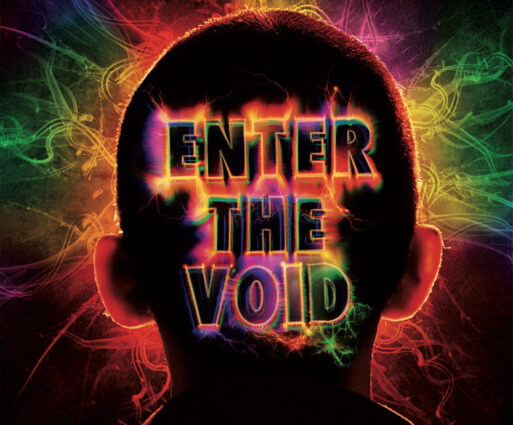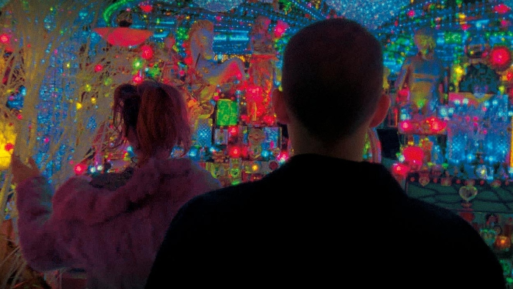
Credit: Fidélité Films, Wild Bunch and BUF
“Enter the Void,” directed by Argentine filmmaker Gaspar Noé, who lives in France, is a visually stunning, psychedelic exploration of one man’s journey after death. The film is renowned for its hallucinatory portrayal of Tokyo’s neon-lit underworld and its unconventional narrative structure, blending mysticism, out-of-body experiences and existential dread.
Enter the Void: A Psychedelic Journey
The story follows Oscar, a small-time drug dealer living in Tokyo, who is killed in a police raid. What makes “Enter the Void” unique is that after Oscar’s death, the film continues from his perspective, as he experiences death and the afterlife. Inspired by the Tibetan Book of the Dead, the film’s structure is fragmented, following Oscar’s consciousness as it moves through different states after death.
Noé portrays Oscar’s death and afterlife as a subjective, psychedelic experience. From the moment of his death, Oscar’s spirit floats above Tokyo, witnessing the aftermath of his demise, revisiting pivotal moments from his past. He also observes the lives of those he left behind, including his sister Linda, with whom he shares a close and complex relationship.
The Portrayal of Death
Death in “Enter the Void” is neither a singular event nor an end. Noé draws upon themes of reincarnation, Eastern spirituality, and altered states of consciousness to depict death as a journey through various stages of existence. The moment of Oscar’s death is disorienting and chaotic, depicted with dizzying camera movements and intense visual distortions that mirror the subjective experience of dying. This sequence merges pain, confusion, and release, creating a visceral representation of the transition from life to the unknown.
The film continually returns to the moment of Oscar’s death, replaying it from different angles, emphasizing the cyclical nature of existence. The neon-lit Tokyo streets, with their relentless movement and vibrancy, act as a contrast to Oscar’s stillness in death. His disembodied spirit navigates these spaces, floating freely above the chaos of the living world, as if trying to comprehend his new, liminal state.

Credit: Fidélité Films, Wild Bunch and BUF
The Afterlife as an Abstract, Psychedelic Vision
In “Enter the Void”, the afterlife is portrayed not as a place, but as a series of overlapping experiences and memories. The camera, often positioned as Oscar’s point of view, drifts through spaces, sometimes fast, sometimes slow, as if reflecting his altered perception of time. This out-of-body experience is marked by intense visual stimuli — pulsating lights, vivid colors and surreal imagery — that evoke the visual effects of psychedelics, adding to the dreamlike quality of the narrative.
Noé taps into the concept of the “bardo,” a Tibetan term for the intermediate state between death and rebirth, to frame Oscar’s journey. The afterlife, in this sense, becomes an infinite loop of memories, regrets, and unresolved emotional ties. Oscar revisits key moments in his life, such as the traumatic death of his parents and his relationship with his sister. These emotionally palpable scenes suggest that the afterlife may not be just a realm of peace but a space for unresolved trauma to replay.
“Enter the Void” is a bold cinematic meditation on the mysteries of life and death. Through its experimental approach, Noé challenges viewers to reconsider what happens after we die. In this film, death is not the end — it is a state of transition, a voyage through the vast, unknowable spaces of the mind and spirit.

 “Enter the Void” by Gaspar Noé
“Enter the Void” by Gaspar Noé


 Support Healthy Aging By Maintaining Balance — On One Leg
Support Healthy Aging By Maintaining Balance — On One Leg
 “Wild Geese” by Mary Oliver
“Wild Geese” by Mary Oliver















